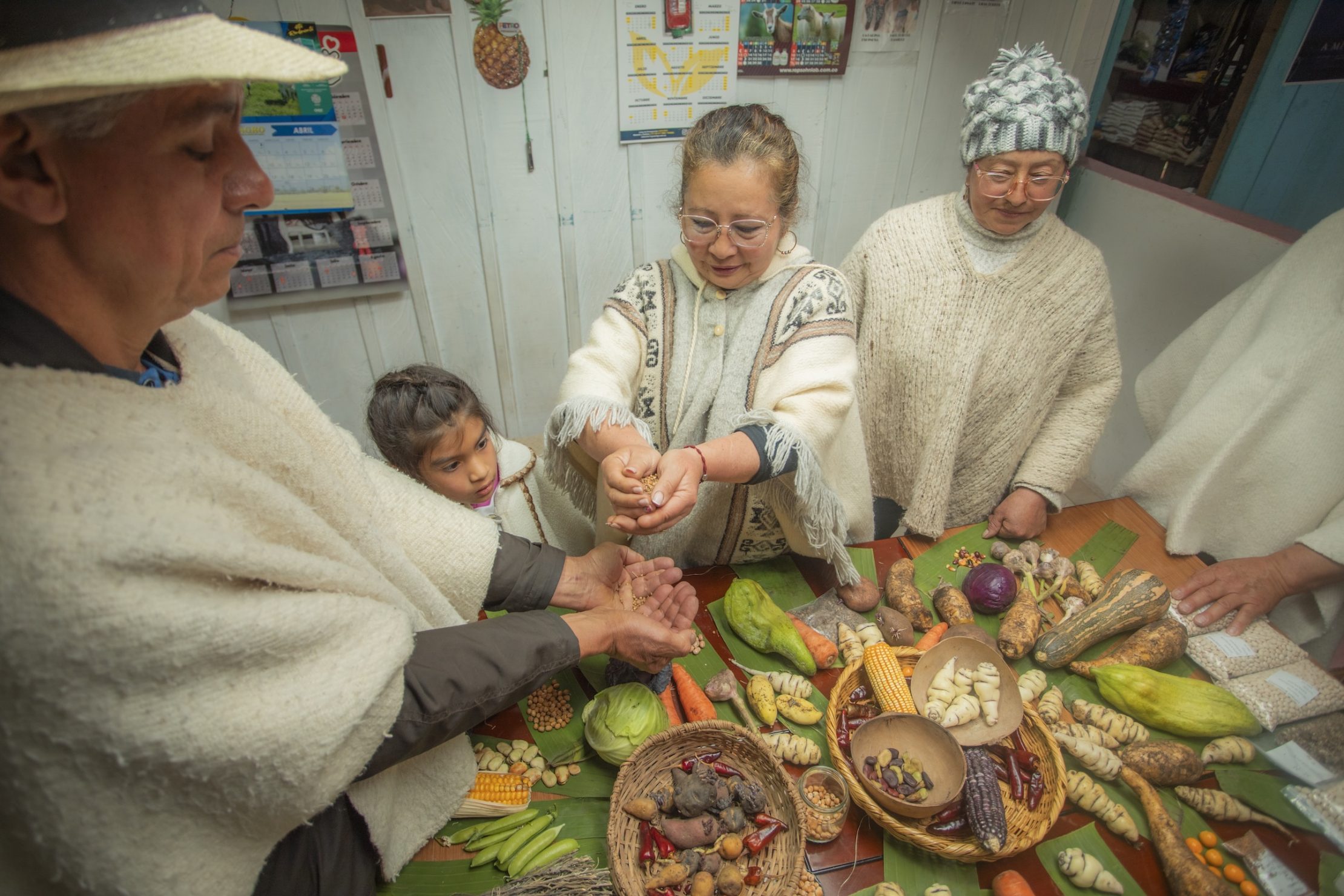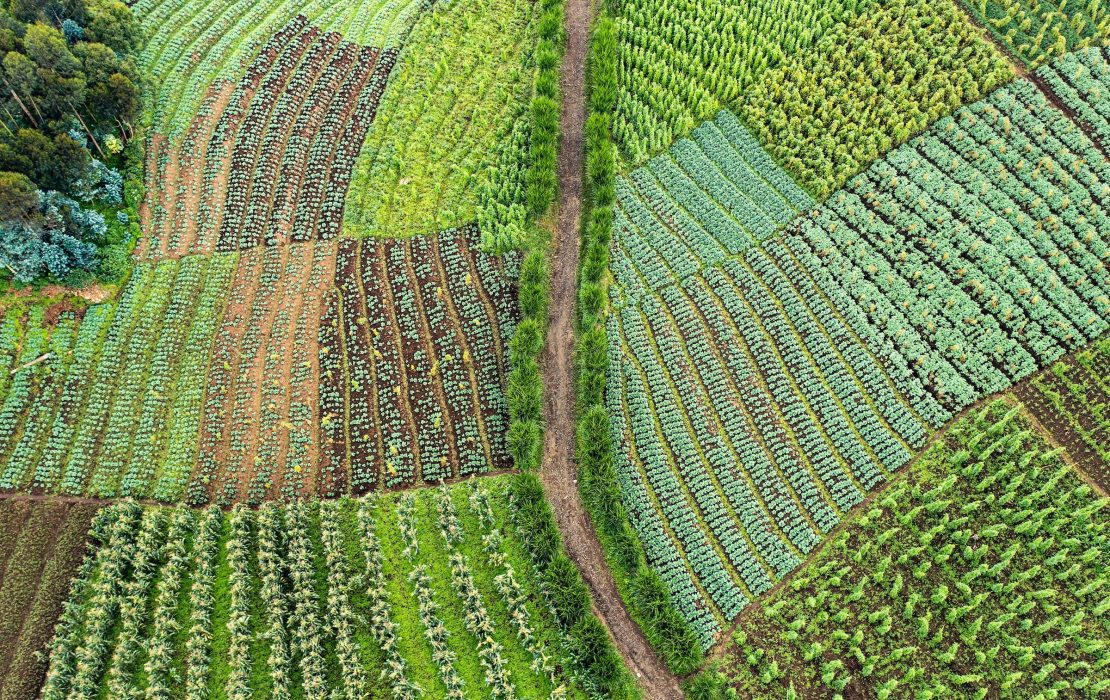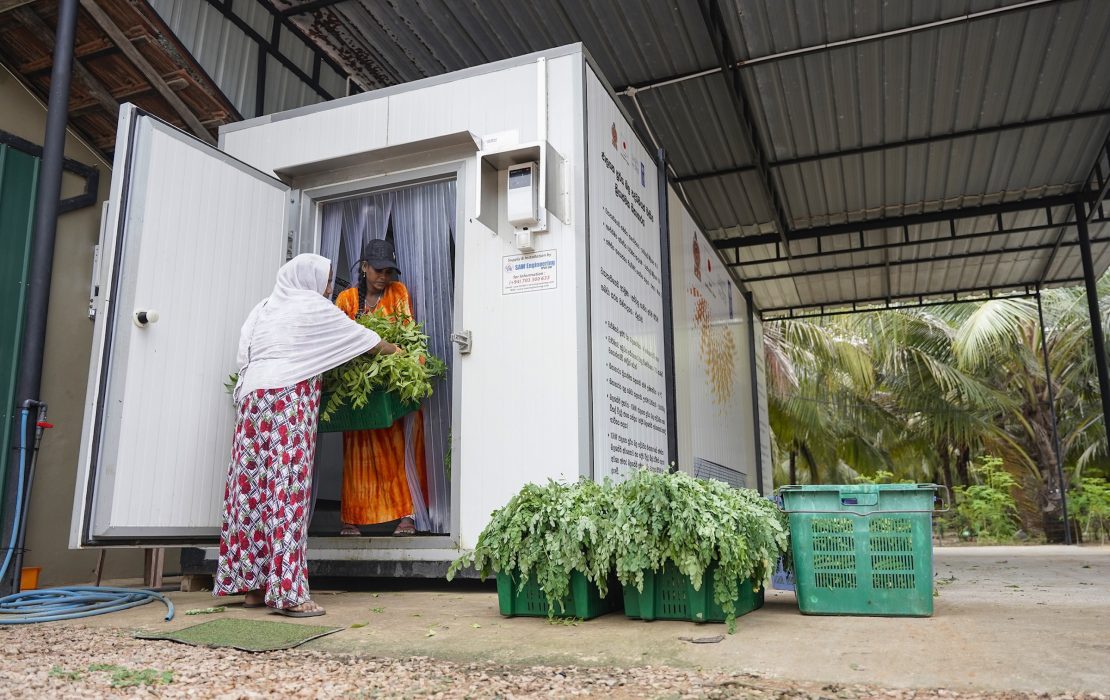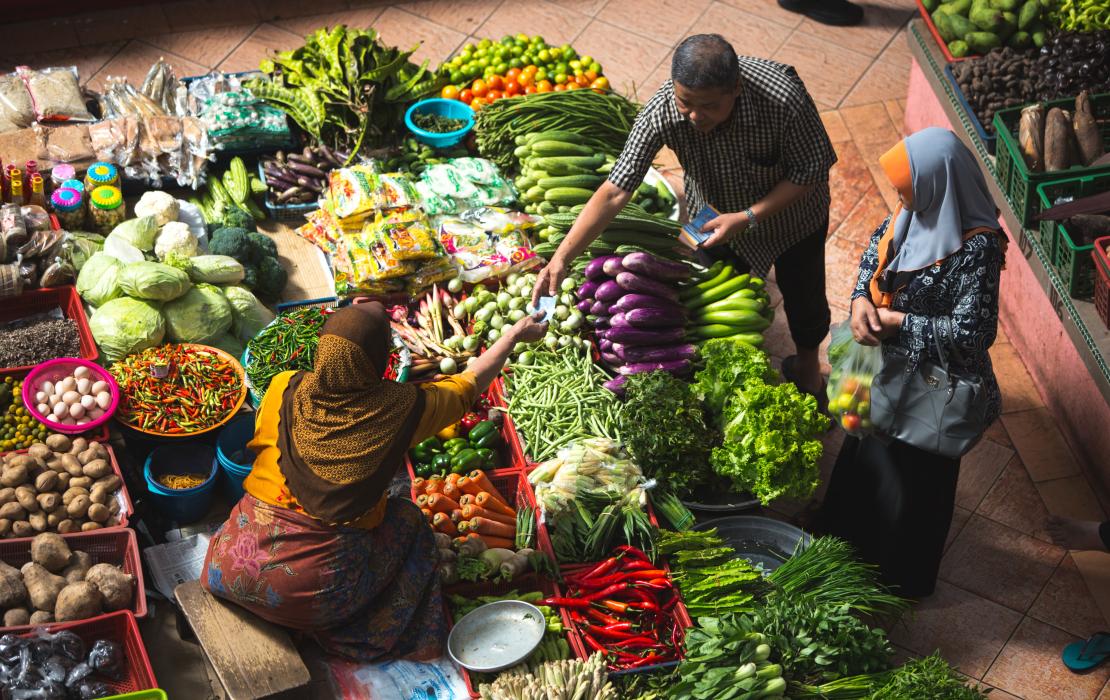
Photo: UNDP Colombia
Every year, a third of the food produced globally goes to waste. Some estimates put this figure even higher at 40 percent, or around 2.5 billion tonnes. This enormous loss means that the precious resources needed for food production – such as water, land, energy, labour and capital – are also wasted.
Furthermore, since food systems account for 30 percent of global greenhouse gas emissions, food waste is responsible for 8 to 10 percent of the emissions causing climate change – almost five times more than the aviation sector. It also costs the world approximately US$1 trillion a year.
Meanwhile, while some parts of the world are wasting food, others go hungry – a situation that will only be intensified by the impacts of climate change, land degradation and biodiversity loss. Southern Asia and Sub-Saharan Africa are experiencing the highest rates of undernourished people in the world, with 281 million and 278 million people, respectively, not being able to access enough nutritious food in 2023.
At the same time, global food demand is expected to increase between 30 to 62 percent by 2050 due to increased urbanization, demographic and lifestyle shifts, and land-use changes. This will make it more difficult to ensure food security and sovereignty.
This is why the world needs a new paradigm of agriculture and land-use management – one that is based on diversified, resilient and sustainable agroecological systems which work simultaneously to provide economic, environmental, social and health benefits. Tackling food loss and waste as part of this shift is essential.
National climate plans are a crucial tool for reducing food loss and waste
The Paris Agreement and its instruments – Nationally Determined Contributions (NDCs), National Adaptation Plans (NAPs) and Long-term Strategies (LTS) – offer opportunities for countries to reduce emissions from food systems and enhance their resilience by replacing current commodity-driven, extractive approaches with a holistic and systemic approach that promotes sustainability, equity and health.
However, while over 80 percent of countries include agriculture as a priority sector in their NDCs, only around 15 percent have commitments related to reducing food loss and waste. As countries are revising their NDCs ahead of COP30 this year, they have a unique opportunity to strengthen and enhance targets and measures related to food systems and further integrate measures to address food loss and waste.
A crucial way to achieve that is through a circular approach where food loss and waste is designed out of the system, food by-products are transformed and used at their highest value, and food production improves rather than degrades the environment. This approach doesn’t only help limit food loss and waste and reduce emissions, it also strengthens food security and sovereignty and ensures nutritious, accessible and ecologically sustainable food production for the future.
To seize this opportunity, countries can use resources such as Building Circularity into NDCs, an interactive online toolbox. Developed by UNDP together with UNEP’s One Planet Network and the UNFCCC secretariat, this first-of-its-kind toolbox can help countries identify, prioritize, implement and track circular economy interventions for increased ambition and implementation of their NDCs, including food loss and waste measures.

Agricultural practices that promote climate resilience can help prevent food loss and waste in Rwanda. Photo: Mucyo Serge / UNDP Rwanda

Farmers are using cold storage to prevent food loss and waste in Sri Lanka. Photo: UNDP Sri Lanka
Here are five concrete measures for reducing food loss and waste that countries can integrate in their third-generation NDCs:
- Make agricultural production regenerative. Conventional agricultural methods have high climate and water footprints that exert a lot of pressure on natural ecosystems, especially water and soil. To reverse large-scale land degradation, biodiversity loss and ground water depletion, countries can implement nature-based solutions that restore ecosystems, employ technologies that optimize land and water usage and adopt regenerative farming practices. For example, the application of the toolbox in Viet Nam helped identify circular initiatives in the rice and coffee value chains. Re-purposing by-products and animal waste in these value chains could generate sufficient organic soil matter, phosphate and potassium sulphate to fulfill the country’s annual fertilizer demand. In addition to reducing emissions, adopting measures around post-harvest waste could also help build resilience by reducing or eliminating dependency on imported fossil fuel-based fertilizers, creating additional income streams for rural farmers, improving water and soil quality, enhancing food quality and diversity and boosting overall food security.
- Review supply chains and urban design patterns for opportunities to create more circular food systems. In Asia, an estimated 40 percent of food is lost at the post-harvest level – between the harvest and the consumer’s plate. Circular urban and peri-urban farming models can bring food production closer to consumers and offer significant opportunities to reduce food loss and waste. Importantly, this can also help build resilience against external shocks and strengthen local and national food security and sovereignty. This can be a particularly attractive solution for rapidly urbanizing countries in Asia, for instance, where food demand already exceeds the capacity of arable land resulting in a food system that relies on imports. Moreover, when the post-harvest aspects of a supply chain, such as processing, transforming and transporting food products, are made more effective, supply chains can become more resilient and agile, thus reducing food loss further.
- Broaden access to clean and decentralized energy to expand usage of adequate cooling and storage systems. In the poorest regions of the world and particularly in rural areas, food losses are often caused by insufficient access to reliable energy infrastructure, which reduces opportunities for value-added activities such as processing and cooling. Lack of cooling makes it difficult for fresh produce to last, leading to massive post-harvest losses. Developing countries could save 144 million tonnes of food annually if they could reach the same level of food cold chain infrastructure as developed countries. While the latest data shows that the number of people without access to electricity is declining – from over 760 million in 2022 to below 750 million in 2023 – closing the energy access gap could not only cut food loss but also dramatically improve livelihoods and expand income generation opportunities. Furthermore, food waste or other available agricultural residues could be used for biogas production, helping bolster energy security. This is particularly important for Small Island Developing States (SIDS), who often rely on fossil fuel imports and are highly vulnerable to climate change impacts.
- Review opportunities to invest in other infrastructure such as transport, irrigation, processing and storage. There are many different elements of the agricultural supply chain that present opportunities to strengthen circular approaches and sustainability. For example, reviving or maintaining Indigenous and traditional approaches such as ancient irrigation networks designed to manage alternating wet and dry seasons. Combining these community-led approaches with technologies that can help us better understand our food’s journey, track temperature and freshness, gauge ripeness, improve demand and supply forecasts, and identify waste streams will be crucial.
- Recover nutrients from wastewater and post-consumer food waste. Every day, countries generate great amounts of wastewater and other organic waste that could be profitably recycled into fertilizer, soil conditioner, clean energy or irrigation water. Wastewater, excreta, farm waste and food waste are all rich with raw materials that can be safely processed back into economically valuable – and environmentally sustainable – products. Capturing this wastewater through circular approaches would lead to significant health, environmental and economic benefits.
These measures show how integrating circular economy approaches into NDCs to rethink food production and reduce food loss and waste can help lower emissions, build climate resilience, strengthen livelihoods, and contribute towards greater food security and public health, while respecting and restoring planetary boundaries. Through these myriad benefits, the circular economy approach offers a vision for food systems that is fit for the 21st century – for both people and planet.
*
The Building Circularity into NDCs interactive online toolbox was developed under a joint project between UNDP, UNEP’s One Planet Network and the UNFCCC secretariat, and was generously funded by the Government of the Netherlands and Sitra, the Finnish Innovation Fund.


